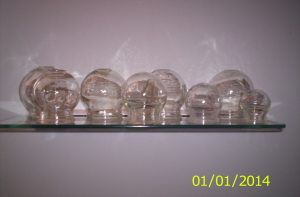Hello and welcome to my blog. As a practicing acupuncturist, I am naturally interested in natural ways to heal and keep a healthy body. I have a healthy respect for Western Medicine and I remind my patients to check with their doctor regarding their medical issues; in fact each new patient signs a form that reminds them to see/consult their physician for the same issue for which they are seeking acupuncture.
BUT it seems to me that more and more people are relying totally on their doctor or health practitioner to fix all and any ailments. Many of us are relying completely on the medical and scientific community to solve all of our health problems. There are times that I cringe when patients tell me that they have a certain diagnosis by their physician with almost a proud ring to their statement. Many diagnosis are required by Insurance Companies in order to get claims paid, and a particular disease like IBS or Crohns disease, arthritis for instance are listed as diseases for insurance purposes, but they are NOT a bug or virus that one contracted. Many of these ‘diseases’ are due to foods/drinks that irritate the digestive system causing the named ‘disease’. Our medical professionals treat the symptoms and in many cases not the cause. –Before anyone starts throwing things at me– I agree that once the ‘disease’ has taken hold, one needs intervention and relief from the pain. What I am suggesting is DON’T stop there. There are many resources out there to help us with the recovery and assist us in finding the root cause. Remember the old joke about the guy with the sore arm? Patient says, “Doctor, my arm hurts when I do this” Doc says, “Well, don’t do that” It’s not quite that simple, but there are things you can and cannot do that will keep your arm or whatever from hurting without taking drastic means that may harm healthy parts of your body. Let’s take responsibility for our health and begin to prevent ill health wherever possible and begin to heal wherever possible. I don’t have all the answers but have some suggestions on where to start on the path to a healthier body with a healthier lifestyle.
Over the years of practicing acupuncture, fifteen at last count, I have and am constantly researching ways to keep you, me and anyone who is interested, healthy. I offer the results of my research to my patients, friends, relatives and anyone who will listen. I highly recommend the research that promotes prevention as a Big Deal and something that should be addressed especially as we age. One only has to look at their aging parents or grandparents to see where they most likely are heading in the years ahead. When people find out about my extensive research for healthy living, I get many calls and emails about their certain ailments and conditions asking what they can do naturally to assist in their healing. I am not an expert on any disease and do not always have the research results on hand, but I am pretty good at finding what research universities have posted or information from one of my ‘rogue docs’. (MDs who also use and recommend natural methods of healing) And I always remind anyone asking for my help on finding new research: After reviewing the research and before making any changes or taking any new supplements to: “Consult with your doctor or pharmacist to rule out any interactions with medications you are taking or any conditions that may be effected. Do not cease taking medication without consulting with your doctor.”
So this Blog will be an outlet for all the research I have done and will continue to do and hopefully offer you the reader some interesting and helpful ways to heal and keep healthy. So again thanks for tuning in, I hope you will find some interesting and helpful information along the way.
Note: I do not intend to ignore the obvious, Acupuncture, in this Blog. First, there is a lot of information about Acupuncture on this site, please check out all the acupuncture sections and then feel free to email or call me with any questions. Second, I will also be addressing the use of Acupuncture for healing along the way in this blog.
